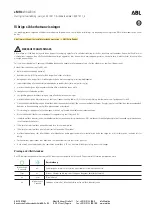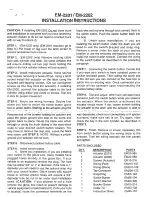
Assuming an incorrect sitting position can cause severe or fatal injuries
⇒
Sitting position
.
Correct seat belt routing
• The shoulder part of the seat belt must always lie on the centre of the shoulder, never across
the neck, over or under the arm or behind the back.
• The lap part of the seat belt must always lie across the pelvis, never across the stomach.
• The seat belt must always lie flat and snugly on the body. Tighten the belt if necessary.
For
pregnant women
the seat belt must be positioned evenly over the chest and as low as
possible over the pelvis. It must lie flat so that no pressure is exerted on the lower body – this
applies in every stage of pregnancy
⇒
Fig. 41
.
Correct seat belt routing according to height
The following equipment can be used to adjust the seat belt routing:
• Seat belt height adjuster for the front seats
⇒
Seat belt height adjuster
.
• Height-adjustable front seats
⇒
Sitting position
.
If a person's physical build prevents them from routing the seat belt properly, contact a
qualified workshop to find out about any special modifications so that the seat belts and airbags can
provide the optimum level of protection. Volkswagen recommends using a Volkswagen dealership
for this purpose.
Seat belt height adjuster
Fig. 42
Next to the front seats: belt height adjuster.
First read and observe the introductoryinformation and safety warnings
⇒
Introduction
The seat belt height adjusters for the front seats can be used to adjust the position of the seat belt
on the shoulder so that it can be fastened properly:
• Push the shoulder belt guide together in the direction of the arrows and hold
⇒
Fig. 42
.
• Push the shoulder belt guide up or down so that the seat belt lies over the middle of the
shoulder
⇒
Seat belt routing
.
• Let go of the shoulder belt guide.
• Pull sharply on the seat belt to check whether the shoulder belt guide is engaged securely.
Incorrect seat belt routing can cause severe injuries in the event of an accident or a
sudden braking or driving manoeuvre.
• The seat belts only offer best protection when the backrests are in an upright position
and the seat belts have been fastened properly.
• The seat belt itself or a loose seat belt can cause serious injuries if the seat belt shifts
from harder body parts in the direction of softer body parts (e.g. stomach).
• The shoulder part of the seat belt must lie on the centre of the shoulder and never
under the arm or across the neck.
• The seat belt must lie flat and snugly on the chest.
• The lap part of the seat belt must lie across the pelvis and never across the stomach.
The seat belt must lie flat and snugly on the pelvis. Tighten the belt if necessary.
• For pregnant women, the lap part of the seat belt must be as low as possible over the
pelvis and lie flat around the bulge of the belly.
• Do not twist the belt webbing while the seat belt is being worn.
• Never hold the seat belt away from the body by hand.
• The belt webbing should not lie over hard or fragile objects, such as glasses, pens or
keys.
• Never use seat belt clips, retaining rings or similar items to alter the seat belt routing.
WARNING
















































